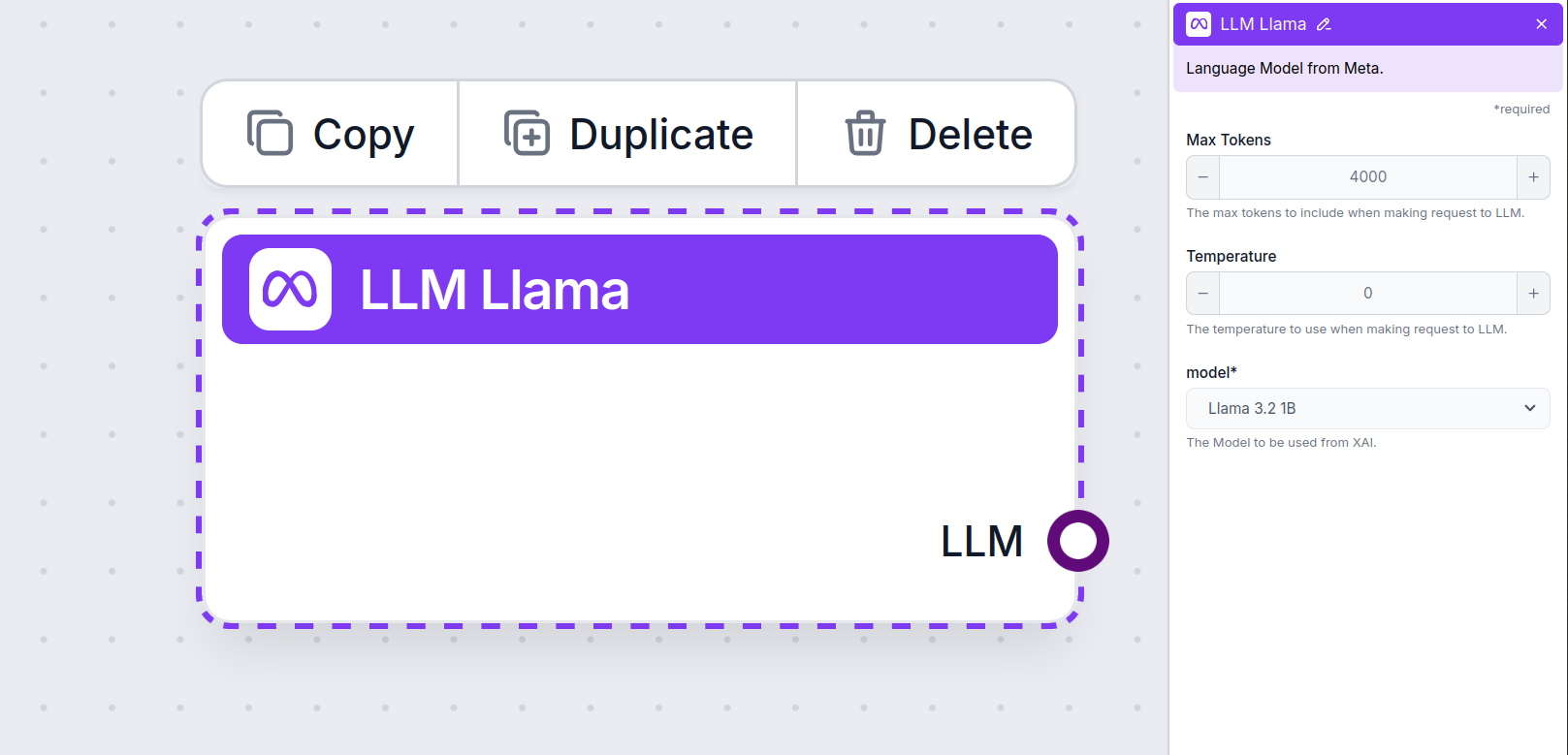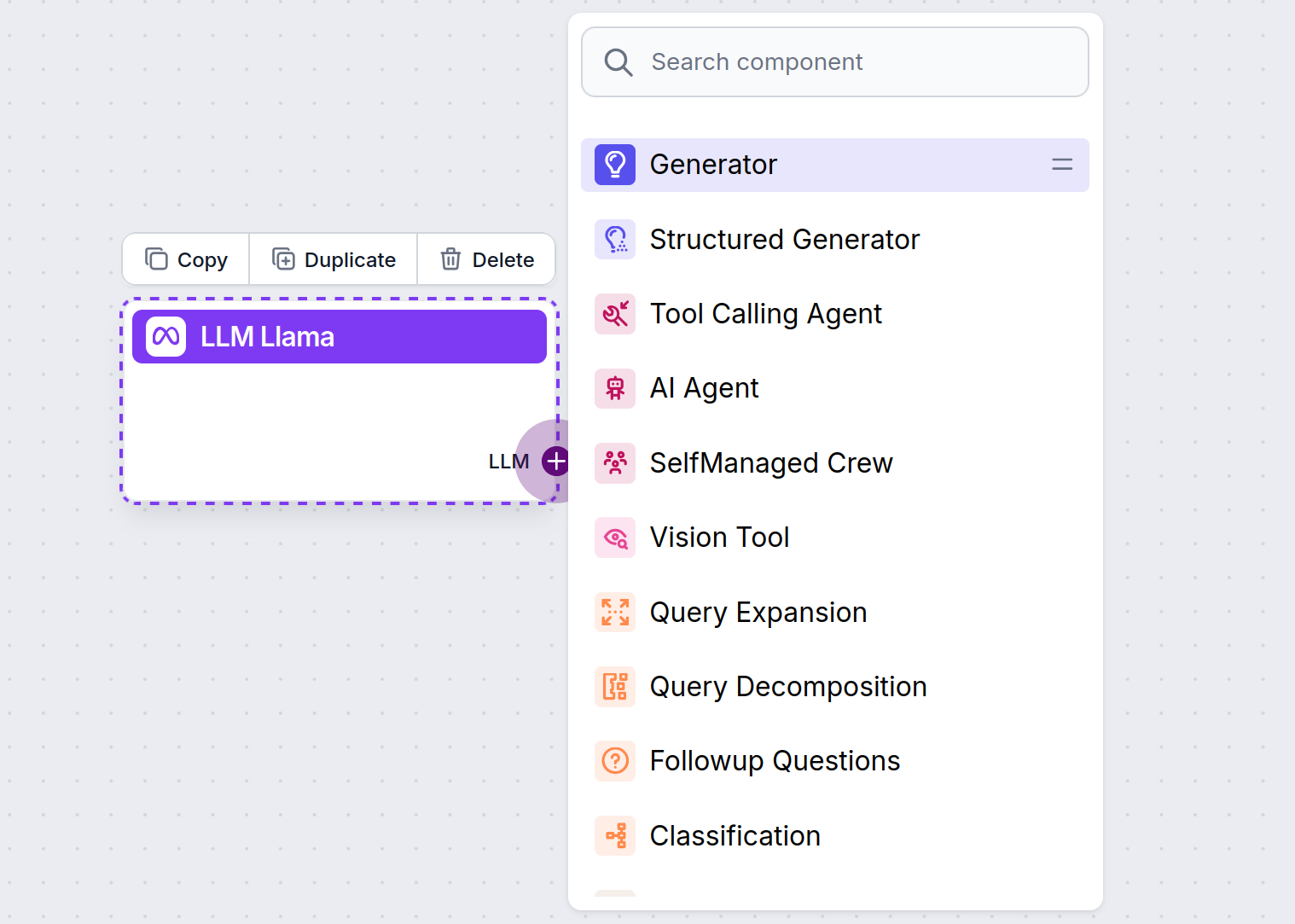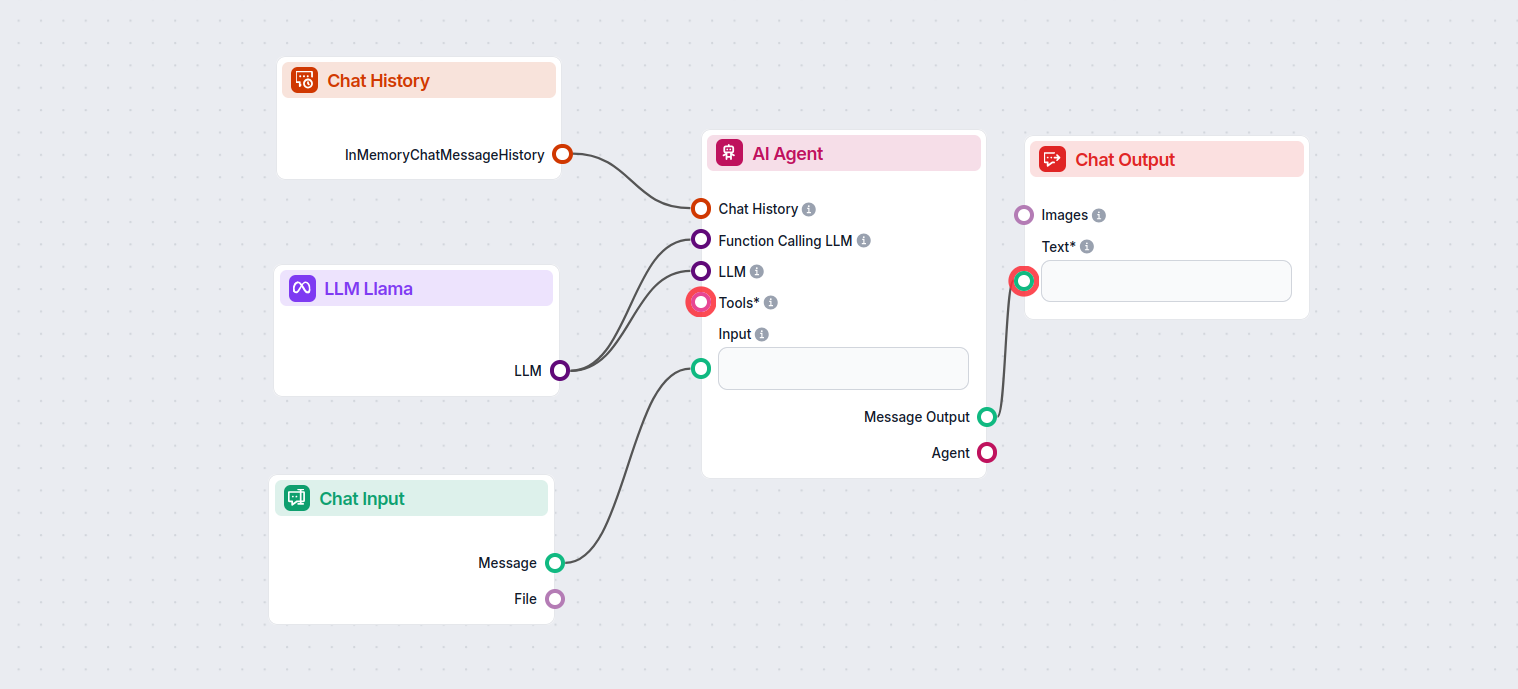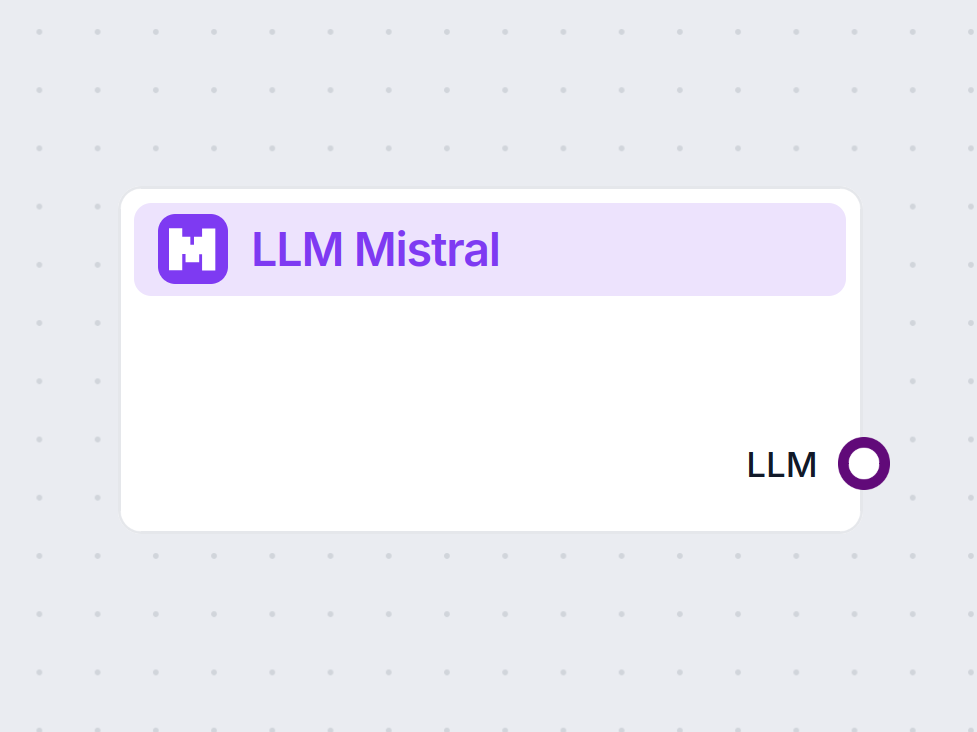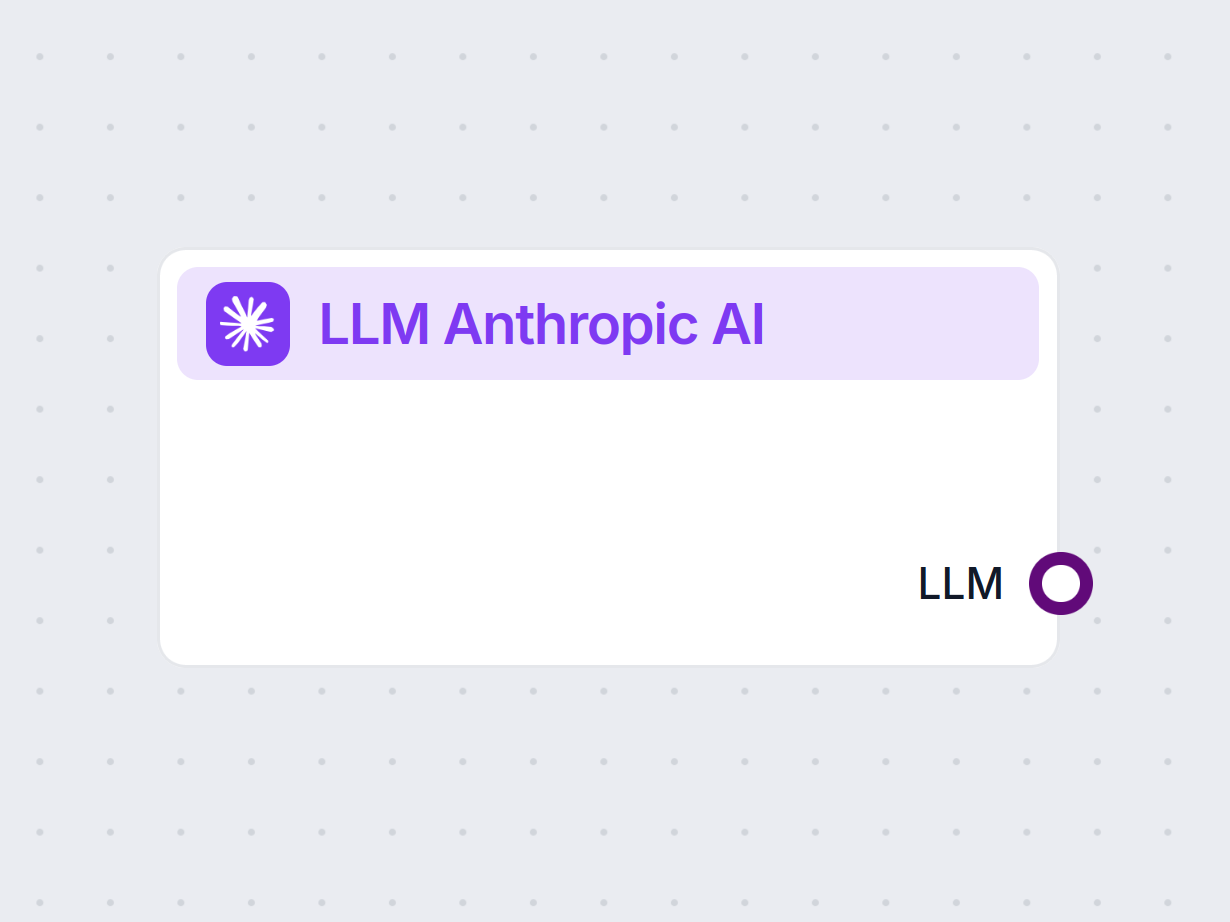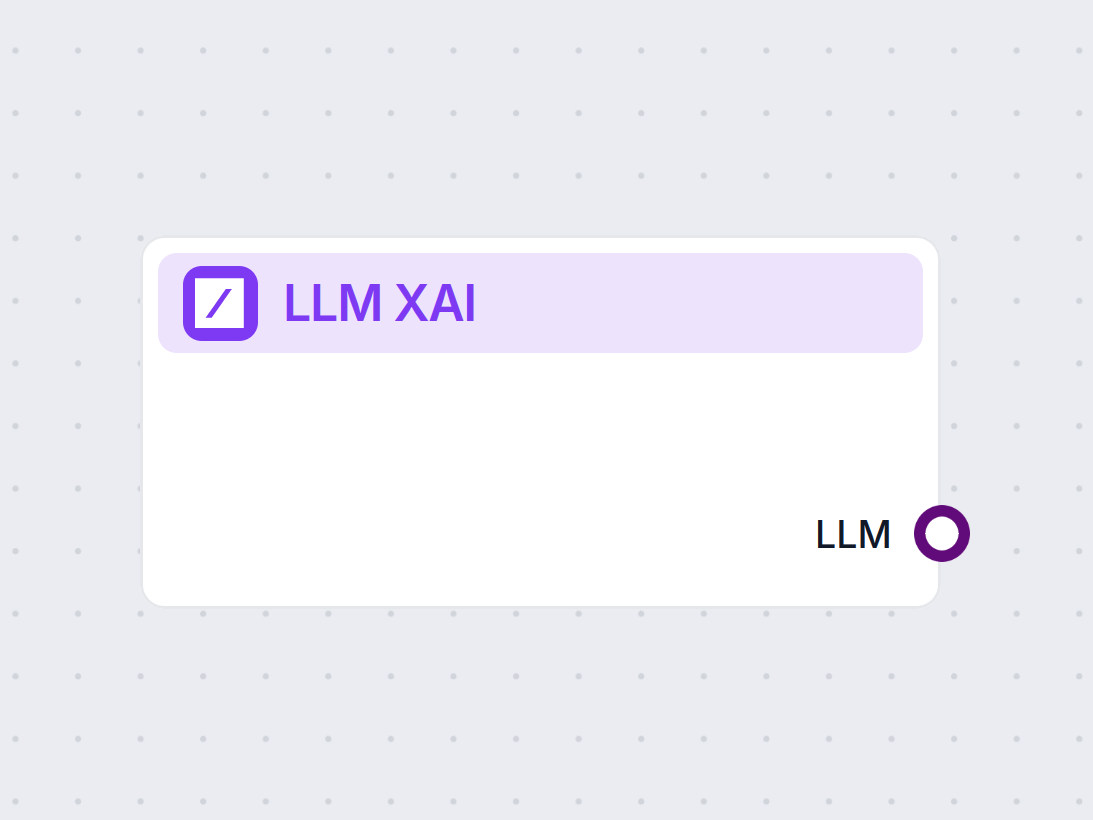
LLM xAI
FlowHunt supports dozens of text generation models, including models by xAI. Here's how to use the xAI models in your AI tools and chatbots.
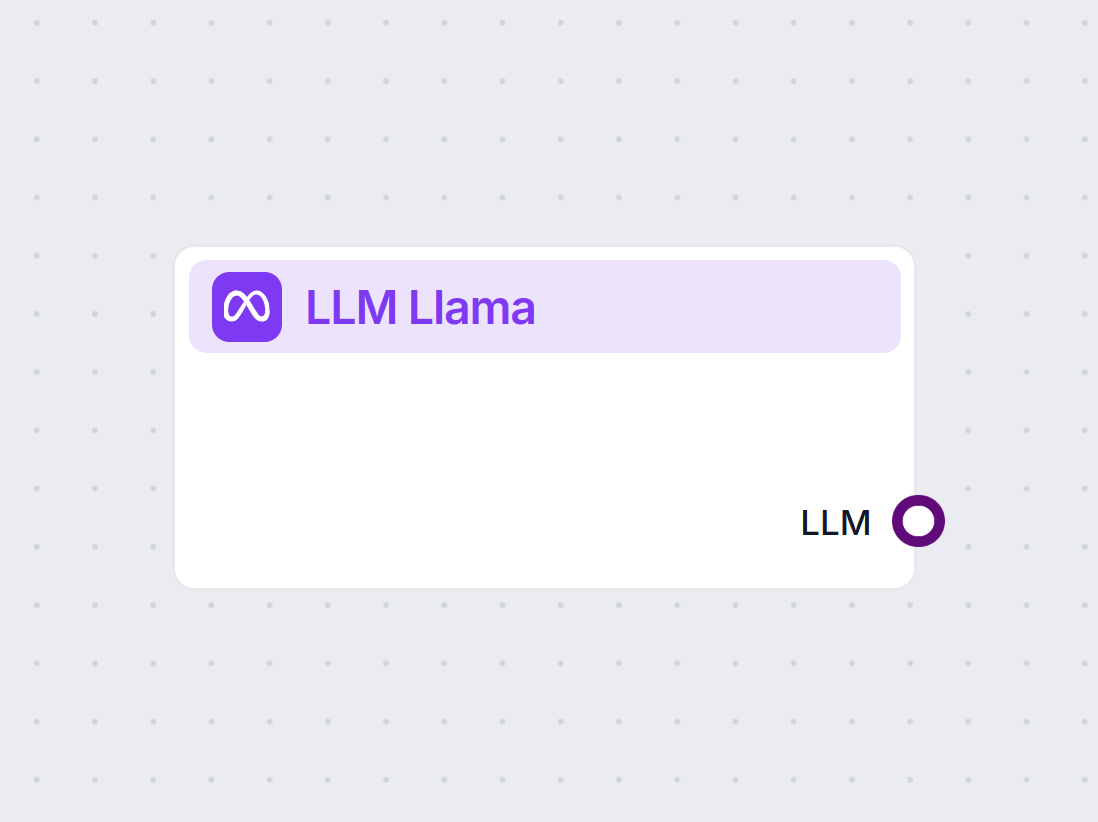
FlowHunt’s LLM Meta AI brings Meta’s Llama models and dozens of other AI models into a single, easy-to-control dashboard for flexible text and image generation.
Component description
The LLM Meta AI component connects the Claude family of model to your Flow. While the Generators and Agents are where the actual magic happens, LLM components allow you to control the used model. All components come with ChatGPT-4 by default. You can connect this component if you wish to change the model or gain more control over it.
Remember that connecting an LLM Component is optional. All components that use an LLM come with ChatGPT-4o as the default. The LLM components allow you to change the model and control model settings.
Tokens represent the individual units of text the model processes and generates. Token usage varies with models, and a single token can be anything from words or subwords to a single character. Models are usually priced in millions of tokens.
The max tokens setting limits the total number of tokens that can be processed in a single interaction or request, ensuring the responses are generated within reasonable bounds. The default limit is 4,000 tokens, the optimal size for summarizing documents and several sources to generate an answer.
Temperature controls the variability of answers, ranging from 0 to 1.
A temperature of 0.1 will make the responses very to the point but potentially repetitive and deficient.
A high temperature of 1 allows for maximum creativity in answers but creates the risk of irrelevant or even hallucinatory responses.
For example, the recommended temperature for a customer service bot is between 0.2 and 0.5. This level should keep the answers relevant and to the script while allowing for a natural response variation.
This is the model picker. You’ll find all the supported models from Meta AI here. We support Meta’s open-source lightweight Llama models. These models are designed for efficient on-device and edge deployments:
You’ll notice that all LLM components only have an output handle. Input doesn’t pass through the component, as it only represents the model, while the actual generation happens in AI Agents and Generators.
The LLM handle is always purple. The LLM input handle is found on any component that uses AI to generate text or process data. You can see the options by clicking the handle:
This allows you to create all sorts of tools. Let’s see the component in action. Here’s a simple AI Agent chatbot Flow that’s using Meta AI’s Llama 3.2 1B to generate responses. You can think of it as a basic Llama chatbot.
This simple Chatbot Flow includes:
The LLM Meta AI component allows you to connect Meta’s Llama models and other text/image generators to your flows, enabling easy model selection and advanced configuration like max tokens and temperature.
FlowHunt supports Meta’s open-source Llama models, including Llama 3.2 1B and 3B, optimized for efficiency, summarization, and on-device deployments.
You can adjust settings such as max tokens (limits response length), temperature (controls answer creativity), and model selection directly from the FlowHunt dashboard for each component.
No, adding the LLM Meta AI component is optional. By default, components use ChatGPT-4o, but you can switch to Llama or other models for more control or specific use cases.
FlowHunt supports dozens of text generation models, including models by xAI. Here's how to use the xAI models in your AI tools and chatbots.
FlowHunt supports dozens of AI text models, including models by Mistral. Here's how to use Mistral in your AI tools and chatbots.
FlowHunt supports dozens of AI models, including Claude models by Anthropic. Learn how to use Claude in your AI tools and chatbots with customizable settings fo...
Cookie Consent
We use cookies to enhance your browsing experience and analyze our traffic. See our privacy policy.
